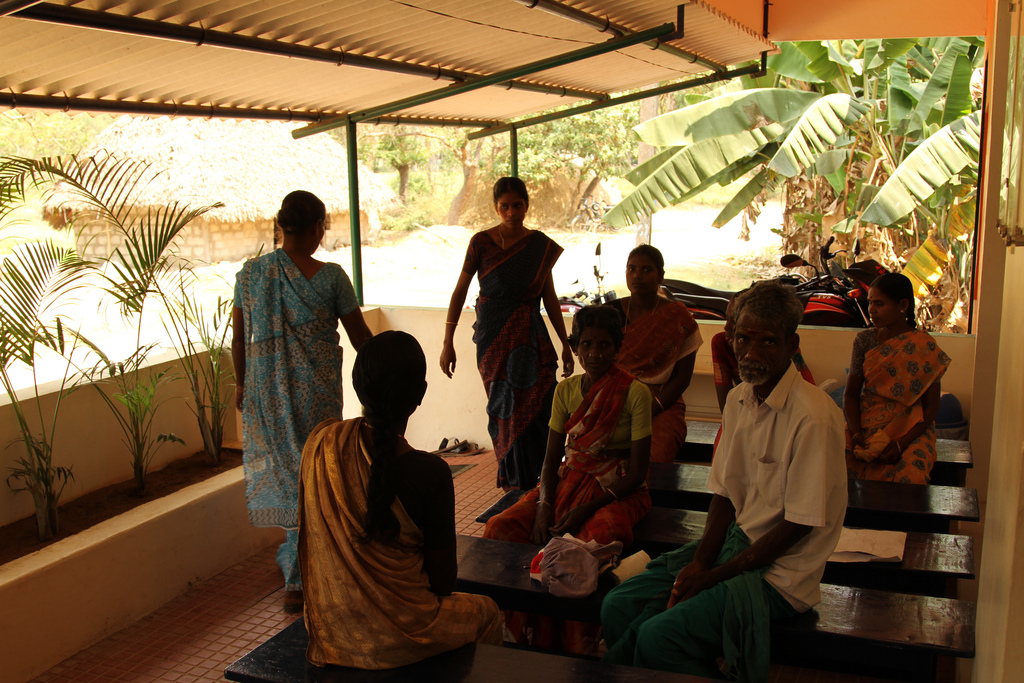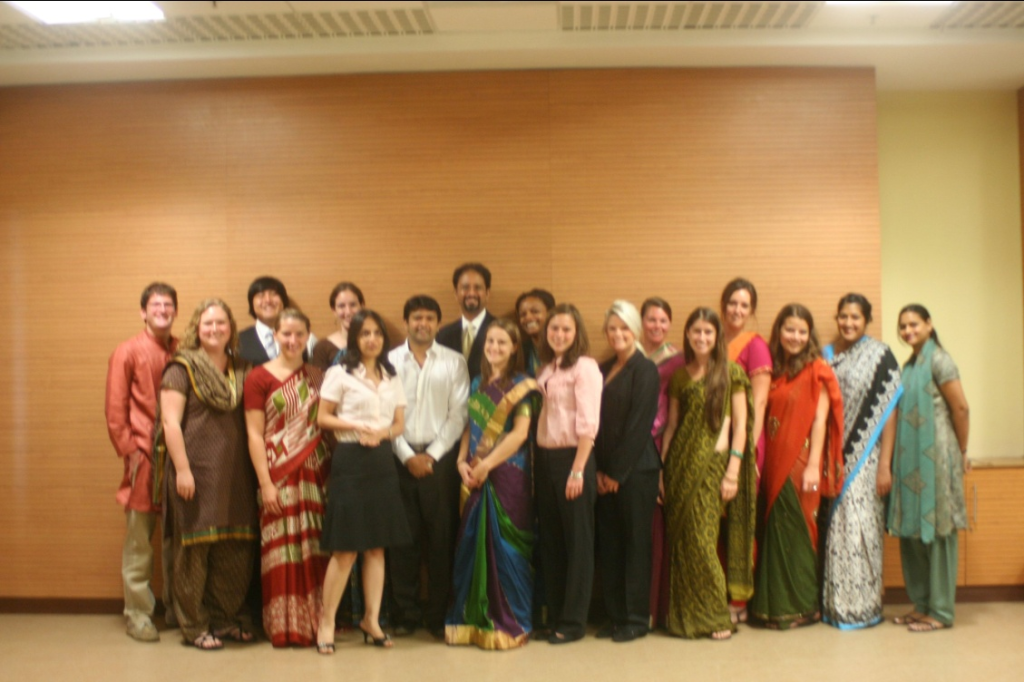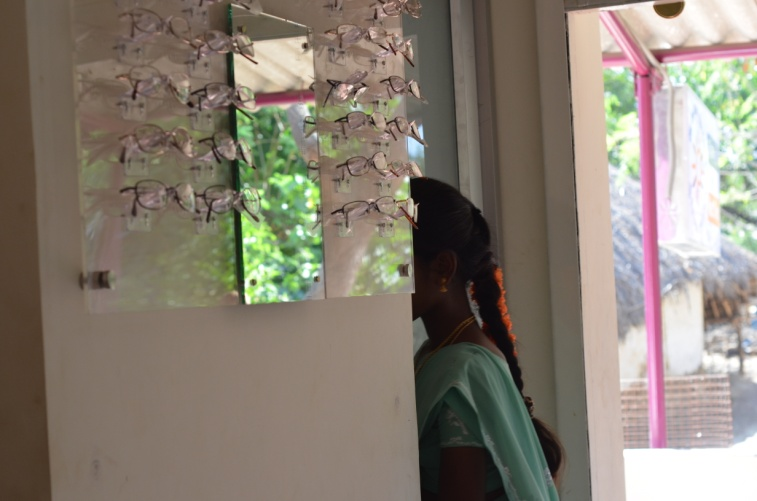By Zeena Johar and Nachiket Mor
The Indian Healthcare Context
At over 3 million square kilometres, stretching 3,000 kilometres from one tip to another, in both directions, with a population crossing 1.2 billion individuals living in over 600,000 habitations, India is one of the largest countries in the world. With 70% of Indian population residing in rural habitations but with 70% of India’s medical infrastructure being available only in urban locations, there is significant disparity in access to basic healthcare. On average, India annually spends approximately Rs.2500 or $50 per capita on healthcare with the government spending limited to only Rs.500 or $10 per capita. Over 70% of healthcare expenditure in India is out-of-pocket, more two-thirds of which is attributable to expenditure on primary care. An additional 20 million people in India are driven below poverty line every year due to catastrophic health expenditure.1
While India perhaps has a reasonable supply of secondary, and tertiary care services in the cities, the limited supply of qualified healthcare practitioners (the doctor:patient ratio for rural India stands at 1:30,000) in modern medicine2, willing to work in rural geographies, leaves the health of rural populations largely in hands of unqualified and unlicensed practitioners, who today define the large unorganized primary healthcare market in India. State governments across the country have sought to fill this gap by offering healthcare services through a combination of sub-centres and primary health centres. However, the actual record of the delivery of these services remains very mixed even at these centres, in large part because of the challenges of inadequacy of human resources as well as a paucity of funds.
 SughaVazhvu provisions healthcare to a catchment population of 50,000 rural Indian through a network of five Rural Micro Health Centres
SughaVazhvu provisions healthcare to a catchment population of 50,000 rural Indian through a network of five Rural Micro Health Centres
The central objective of the research work at ICTPH is develop frameworks which address these challenges of human resources and limited finances so that both the public sector as well as the private sector that is interested in these issues, can ensure the delivery of high quality healthcare even to the remotest of rural Indian populations.
The framework developed by ICTPH seeks to deliver health outcomes at the population level through a combination of community level monitoring and the provision of continuous care at the local level. In our approach, which has a focus on rural India, a community-based, physician staffed healthcare centre, assisted by a village based Health Extension Worker (HEW), providing the broadest possible range of healthcare services (including dental fillings and scaling, cervical cancer screening, vision screening and dispensation of glasses, and management of chronic diseases) at the primary level, sits at the core of a sustainable model of ‘pro-active’ healthcare delivery.
ICTPH in collaboration with Sughavazhvu Healthcare, a local health care provider in Thanjavur, Tamil Nadu, has rolled out its healthcare delivery model to field-test it and to eventually demonstrate its effectiveness in a rural Indian context. Over a period of time it hopes to work with multiple such field partners across the country including in states such as Orissa and Uttarakhand. ICTPH and Sughavazhvu are also collaborating to develop a full “Managed Care” programme for rural populations, building on their unique primary care delivery model to offer a full-service model of healthcare and financial protection.
 Each Rural Micro Health Centre serves a catchment population of 10,000 individuals and is managed by a physician and a village based health extension worker
Each Rural Micro Health Centre serves a catchment population of 10,000 individuals and is managed by a physician and a village based health extension worker
ICTPH Research Priorities
Research at ICTPH is primarily driven by four focus areas – human resource, technology & infrastructure, interventions, and financing. Population mapping and risk profiling catchment populations coupled with a village-based physician led care delivery outline the ‘pro-active’ care methodology at ICTPH. The model for delivering primary healthcare to remote rural populations in India, as conceptualized by ICTPH provides for a wide range of village based healthcare services ranging from acute care, chronic disease condition management, ophthalmic care, dental care, and population level screening and aggressive management of the health of those individuals that are deemed to be at high risk.
The human resource innovation is in tapping the large qualified Ayurveda, Siddha and Unani talent pool in the country (who are legally permitted to practice allopathic medicine) and training and certifying them on our evidence based protocols so that they can serve as ‘independent care providers’ in a rural setting. In our view this talent pool is already large (750,000 qualified registered practitioners), can much more easily be expanded than the pool of physicians trained in allopathic care, and is currently being severely under-utilized by the country. In the ICTPH model, the physician is aided by a local HEW who facilitates patient triage, follow-up visits, and community engagement activities. The physician and the HEW form the local service unit for a population of 2,500 rural families and serve them through a Rural Micro Health Center (RMHC) designed by ICTPH. Technological facilitation at all the RMHCs through our Health Management Information Systems (HMIS) ensures delivery of closely monitored, evidence based care, for the families under our care.
Care Delivery Pathway – A Value Network Creation:
The ICTPH design principles are being implemented in close collaboration with our Thanjavur based field partner Sughavazhvu Healthcare. ICTPH and Sughavazhvu currently serve a population of 15,000 rural families through a network of six RMHCs.
Site Identification: A contiguous rural geography of 50,000 rural families has been identified. The RMHC expansion follows the proximate catchment methodology in order to benefit from word-of-mouth awareness building, optimal supply chain management across the network, and most importantly, measurable health outcomes throughout the Sughavazhvu value network.
Enrolment and Population Risk Screening: Epidemiological mapping through GPS markers for households, basic house-hold (HH) level information and non-invasive risk screening is accomplished at each house hold (HH) using android based mobile phones synchronised real-time with the HMIS. Bar coded individual identity cards provide a systematic data base for provisioning continual care to the population. Identified very high risk individuals, for example for cardiovascular diseases (CVD) (based on height, weight, blood pressure, tobacco consumption, and waist and hip circumference as risk markers), and reproductive tract infections (amongst women) are exhorted to seek treatment at the RMHC immediately. The enrolment protocol has been implemented across five RMHC sites, enrolling a total of 46,189 individuals. The community based risk assessment protocol has been implemented at one site, (Karambayam RMHC) screening 3,781 adults at their homes, wherein amongst other risk parameters, 524 adults were diagnosed as being at high risk for hypertension and referred for confirmatory diagnosis and treatment to the Karambayam RMHC.
 The village based health extension worker assists the physician with evidence-based patient screening and management protocols
The village based health extension worker assists the physician with evidence-based patient screening and management protocols
RMHC and its Functioning: Each RMHC serves an enrolled and risk graded population of 2,500 families. Each RMHC is staffed by a locally hired physician assisted by a HEW who is hired from amongst the families served by the RMHC. The physician typically holds an undergraduate degree in Ayurveda or Siddha systems of medicine. The three month training and certification physician program at ICTPH, among other things, corrects their identified knowledge deficits in areas such as pharmacology and drug interaction. The rigorous training on evidence based protocols equips the physician to multi-task as they manage infectious diseases, non-communicable diseases, dental treatments including scaling and fillings, comprehensive eye examination and prescription and dispensation of spectacles, mental health counselling and treatment (under development), and cervical screening including cervical cancer screening using the VIA/VILI methodology. Up to the end of February 2012, through a network of five RMHCs, a total of 10,897 patient visits have been managed by Sughavazhvu.
|
|
|
Health Management Information Systems (HMIS): The HMIS as developed by ICTPH is the first-of-its kind primary healthcare management tool in India. Other than capturing patient-physician interaction the web-based, open source HMIS has fully functional units for supply chain management, monitoring and evaluation, clinical audits and integration with android based mobile platforms for data integrations. Modules such as human resources management, training management, clinical data analysis and community disease mapping aided by geo-visualization are under development.
 Diagnostics at SughaVazhvu – Rural Micro Health Centres, provisioning better chronic care management
Diagnostics at SughaVazhvu – Rural Micro Health Centres, provisioning better chronic care management
to rural populations
Community Engagement: Various methodologies are implemented throughout the network to ensure maximum participation of populations served. RMHC based specialist camps, such as for cervical cancer screening, vision and dentistry, village based self-help groups, and school based preventive strategies are some of such activities anchored by the local RMHC physician and the HEW.
Wellness Tracking: Identifying high risk individuals through systematic community based interventions and managing their risk profile from high to moderate status defines the wellness tracking methodology. Evidence based protocols for management of diabetes, hypertension, and hypercholesterolemia are the chronic conditions managed by the network at present.
Health Financing: The present model of financing explores various user fee based structures for all the services offered. The objective of the health financing vertical is to demonstrate a self-sustaining healthcare delivery model through mechanisms such as fixed price pre-paid primary healthcare coupled with insurance mechanisms which help risk pool for higher forms of care. These mechanisms would demonstrate a model to effectively insulate populations from catastrophic and out of pocket health expenditures with gate-keeping mechanisms developed by ICTPH ensuring quality of care and sustainability. They could also serve to augment the limited public funds that are available for the provision of these services.
 Washington University in St. Louis’s first off-campus Trans-disciplinary Problem Solving Course co-taught in Thanjavur in partnership with ICTPH
Washington University in St. Louis’s first off-campus Trans-disciplinary Problem Solving Course co-taught in Thanjavur in partnership with ICTPH
Academic Partnerships: ICTPH’s standardized protocol driven primary-care service modules have been developed in partnership with the School of Nursing, University of Pennsylvania. ICTPH’s partnership with the Warren Brown School of Social Work at Washington University in St. Louis executed the first off-campus, on-site trans-disciplinary problem solving course co-taught by faculty at the Brown School and senior researchers at ICTPH. ICTPH’s summer global internship program has built a platform for international collaboration with students across campuses such as Johns Hopkins, the Wharton School, Massachusetts Institute of Technology, and Columbia Business School.
1 High Level Expert Group Report on Universal Health Coverage for India – Instituted by the Planning Commission of India
2 Central Bureau of Health Intelligence, Ministry of Health and Family Welfare, Government of India

 Vision screening protocol as implemented by the health extension worker
Vision screening protocol as implemented by the health extension worker Provisioning near and distance vision glasses through the RMHC network
Provisioning near and distance vision glasses through the RMHC network
Leave a Reply
Be the First to Comment!